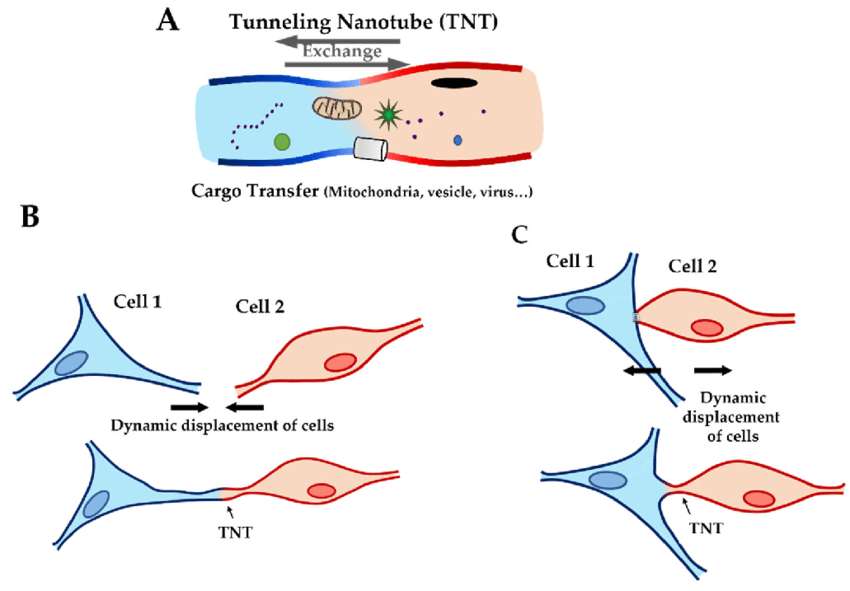Yes! Scientist of Texas Biomedical Research Dr. Olena Stank said “Ebola Virus Can Hide and Transport in a New Way”! In the ever-evolving landscape of virology, a groundbreaking study conducted by scientists at the Texas Biomedical Research Institute (Texas Biomed) has unveiled a previously unknown facet of the Ebola virus. Published in the Journal of Infectious Diseases, the research indicates that Ebola doesn’t merely infect cells conventionally but employs intercellular tunnels to stealthily move and propagate within the human body. Source: Ommcom News

Texas Biomedical Research Institute’s Revelation
Led by Assistant Professor Olena Shtanko, the team at Texas Biomed made a remarkable discovery that challenges the traditional model of Ebola virus spread. Unlike the simplistic notion of viral particles infecting cells, replicating, and releasing new viruses into the body, the study reveals a more intricate process at play.
Formation of Intercellular Tunnels
At the heart of this revelation lies the creation of tunnelling nanotubes by the Ebola virus. These dynamic connections between cells enable the virus to communicate and exchange particles over substantial distances, up to 200 microns. What’s intriguing is that the virus itself is responsible for generating these nanotubes, forming a hiding place for its activities.

Significance of Tunneling Nanotubes
Tunnelling nanotubes have been known to play pivotal roles in various health conditions, including neurodegenerative diseases, cancer, HIV-1, and influenza. However, Dr. Shtanko’s study is the first to shed light on their involvement in disseminating the Ebola virus.
Dynamic Connections between Cells
In essence, these nanotubes serve as dynamic connections between cells, facilitating the transfer of viral particles. Even small sections of the virus, coding for individual proteins, are sufficient to trigger nanotube formation. This discovery adds layers of complexity to our understanding of the virus’s behaviour.

Role in Neurodegenerative Diseases and Other Viruses
While tunnelling nanotubes have been implicated in promoting various diseases, their role in the spread of the Ebola virus adds a new dimension. Dr. Shtanko’s research expands our comprehension of how these dynamic connections contribute to viral dissemination.
Olena Shtanko’s Found Ebola Virus Can Hide and Transport in a New Way
Dr. Olena Shtanko, reflecting on the study, notes, “Our findings suggest that the virus can create its hiding place, hide, and then move to new cells and replicate.” This observation challenges conventional thinking and underscores the adaptability and complexity of the Ebola virus.

Innovative Technology Used
The research team utilized state-of-the-art technology, employing live scanning electron microscopy and high-resolution 3D microscopy. These advanced techniques allowed them to visualize and document the intricate interactions between the virus and host cells.
Observations with Live Scanning Electron and 3D-Microscopy
Through meticulous observation, Dr. Shtanko and her team demonstrated that Ebola virus infection in cells actively enhances the formation of tunnelling nanotubes containing viral particles. This insight provides a tangible link between the virus and the nanotube network. The detailed research you can find out in the Research Gate Paper by Dr. Shtanko.

Nanotube Formation and Viral Particle Transfer
The study reveals a direct correlation between Ebola virus infection, nanotube formation, and the transfer of viral particles to other cells. This mechanism explains how the virus eludes detection and facilitates its spread within the host.
Partial Virus Coding Triggering Nanotube Formation
One of the most surprising findings is that nanotube formation doesn’t require the entire virus. Small sections of the virus coding for specific proteins are adequate to trigger the creation of these intercellular tunnels, further highlighting the virus’s adaptability.

Spread Despite Treatments
Equally significant is the observation that Ebola virus infection can persist even in the presence of treatments designed to inhibit its entry into cells. This challenges existing therapeutic approaches and underscores the urgency of understanding alternative pathways of viral dissemination.
Transport Mechanism through Nanotubes
While the study provides groundbreaking insights, the exact mechanism of Ebola virus particle transportation through tunneling nanotubes remains a mystery. Further research is essential to unravel this aspect and identify potential targets for intervention.

Implications for Drug Development
Understanding the role of tunnelling nanotubes in the Ebola virus spread opens avenues for developing targeted drugs and therapies. By disrupting the formation or function of these intercellular tunnels, scientists may devise strategies to halt the virus in its tracks.
Conclusion
In conclusion, the study by Texas Biomedical Research Institute unravels a hitherto unknown dimension of Ebola virus behaviour. The intricate dance between the virus and tunnelling nanotubes challenges conventional models of viral spread, offering new insights that can shape the development of antiviral strategies.
For more latest trendy news like this visit our Latest News page. To contact us please visit our Contact Us page located in the footer menu. For various needy offers and deals of the day you can check out our Best Deals page. To know more about us visit the About Us page in the footer menu. You can also read our Disclaimer, Affiliate Disclosure and FAQs page located in the footer menu. You can also find the Webstory Page in the footer menu to see our latest published web stories.
Source: Ommcom News
FAQs
- How do tunnelling nanotubes contribute to the Ebola virus spread?
- Tunnelling nanotubes facilitates the transfer of viral particles between cells, promoting the virus’s dissemination.
- Why is the discovery of nanotubes significant in Ebola research?
- It adds complexity to our understanding of how the virus operates and opens avenues for targeted interventions.
- Can existing treatments effectively stop Ebola virus infection?
- The study suggests that some treatments may not completely prevent viral spread, emphasizing the need for innovative approaches.
- What role does Dr. Olena Shtanko play in the study?
- Dr. Shtanko led the research at Texas Biomedical Research Institute, providing valuable insights into the virus’s behaviour.
- What is the next step in understanding Ebola virus transportation through nanotubes?
- Further research is needed to unravel the exact mechanism of virus particle transport and identify potential intervention points.

